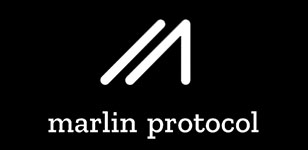Introduction
With all the talk about layer 2 solutions among the blockchain community, there has been very little chatter about the underlying technology that powers blockchains. While layer 2 solutions are essential to scale blockchains, it is vital to have a very stable foundation as well. The peer to peer networking layer called Layer-0 is made up of many different layers that are put together to create the foundation of the blockchain networks.
Here are the layers:

How will layer-0 affect blockchains?
An unstable peer to peer network causes blockchain networks to become unstable, inefficient an increases the risk of a network being vulnerable to security risks. Layer-0 works like a road, a badly damaged road means that a Marlin Protocol 2 car can become vulnerable to damage and it is very inefficient to drive on a damaged road since it’s slower and you use more gas to travel the same distance.
Let’s look at the benefits of a better layer-0:
- Higher throughput for blockchain platforms.
- Lower fees.
- Faster finality.
- Better performing decentralized cloud services.
- Increased Layer 2 performance and security.
- Anonymity.
- Increased decentralization.
Layer-0 Security vulnerabilities
Eclipse Attacks
An eclipse attack is an attack that controls a node’s access to information in the p2p network. With the manipulation of the peer-to-peer network, an adversary can “eclipse” a node, so it’s only communicating with malicious Marlin Protocol 3 nodes. Allowing for a high probability of the network being split; due to the attackers’ creation of a “sphere of influence” to control all the connections going to and from a victim’s node.
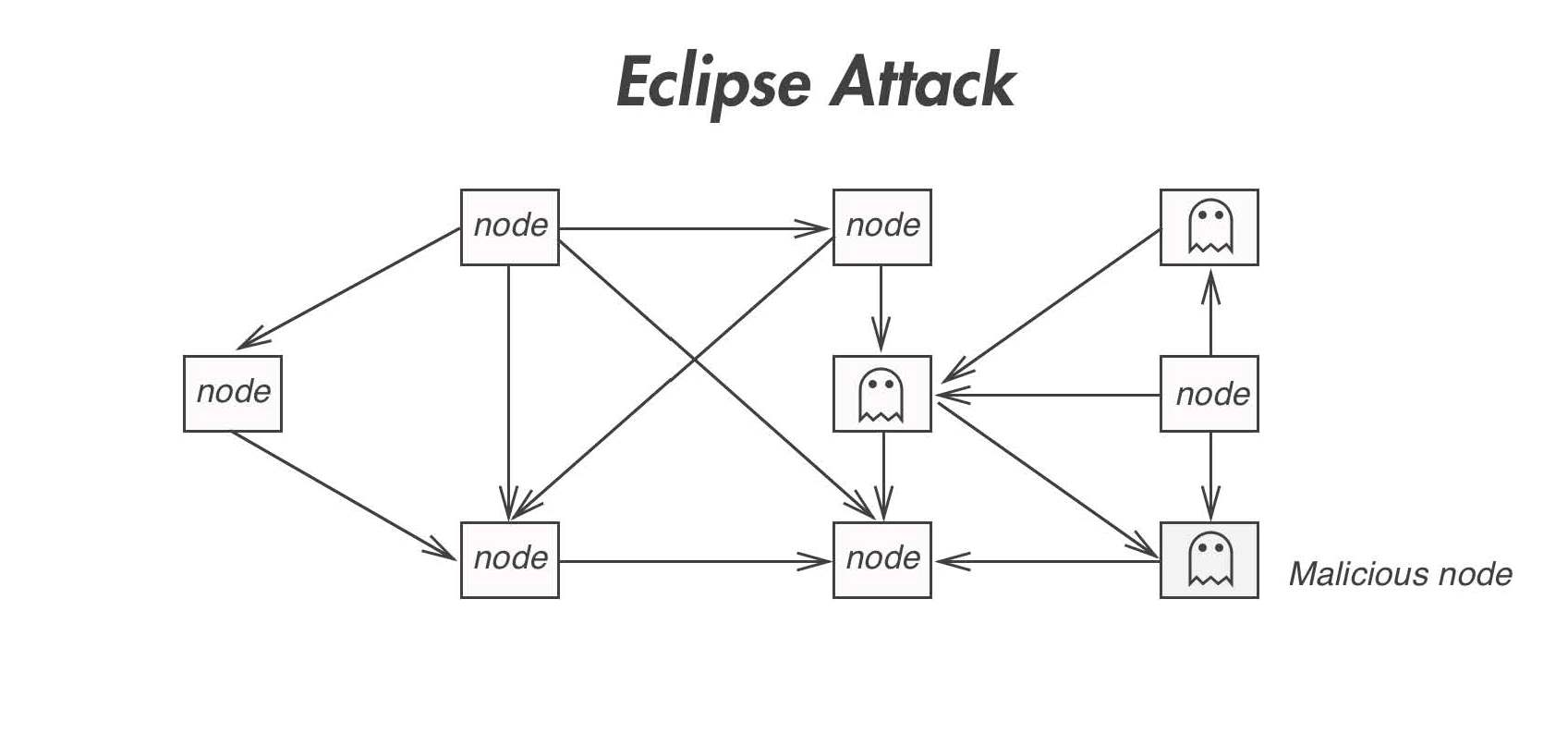
Partition Attacks
Any ISP can partition a blockchain network by carrying traffic to and from a Bitcoin node that can delay its block propagation by up to 20 minutes while staying completely under the radar. Partition attacks can also divide up the network’s hash power, making it easier to attack since an ISP can just block communication to other nodes. This reduces the total hash rate in the blockchain system to allow for 51% attacks to be accomplished with lower amounts of resources.
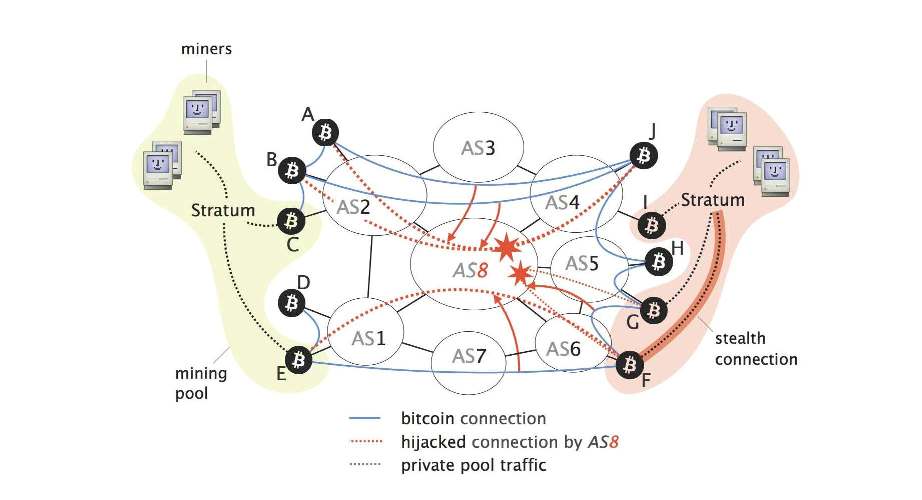
Black-hole and Greyhole attacks
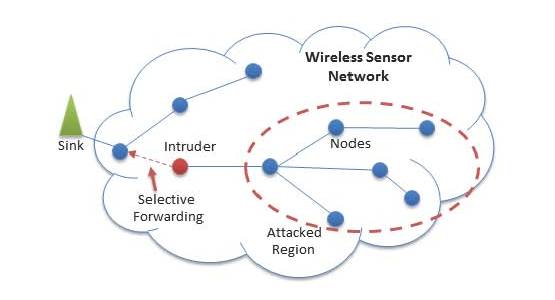
Black-hole attacks
A black-hole attack is a type of denial-of-service attack in which a router is supposed to relay packets but discard them instead. This usually occurs from a router becoming compromised from a number of different causes.
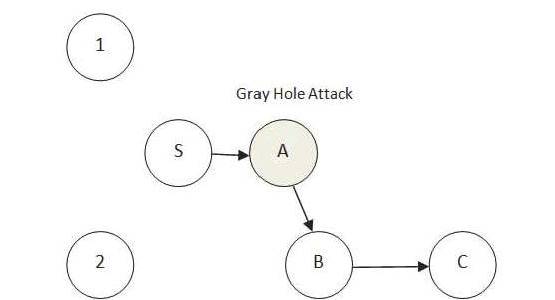
Greyhole attacks
Greyhole attacks are very similar to black-hole attacks, with the difference being that nodes are strategically attacked to achieve a more efficient attack on the network.
Chunk Attacks
Invalid Chunks
Malicious producers can send through invalid chunks which will not reconstruct the correct message and lead to an error.
Chunk Withholding
Malicious producers in the network can withhold chunks and not allow them to be published throughout the network.
How can we solve the Layer-0 problem?
Networking requires a reliable broadcasting network. Only once blocks are propagated throughout the network can the next block be mined; which relies on peer to peer communication to send block information through to all the nodes. Thus lowering the total transactions per second that can be achieved. This isn’t a Proof of Work only issue as voting systems require low latency and highly redundant infrastructure to make sure that the information diffusion process happens quickly.
Our Solution: Marlin Protocol
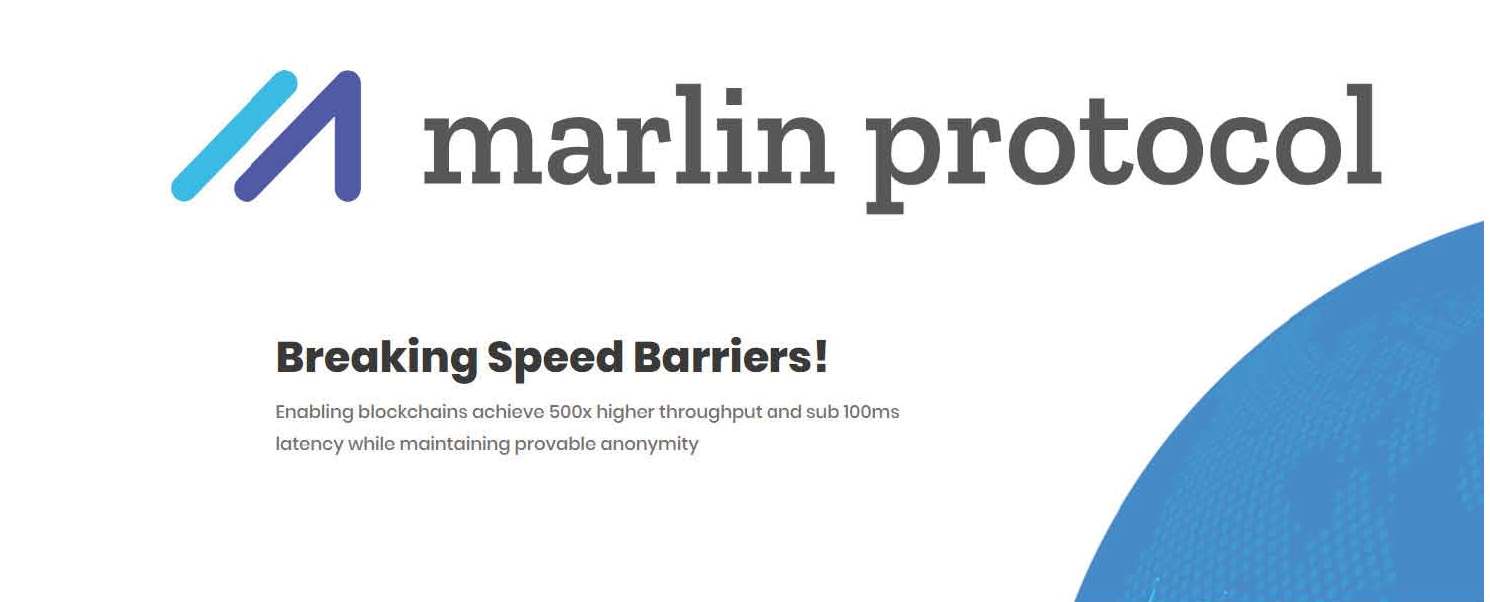
The Marlin network can be broken down into four parts: creation, management, packet propagation, and monitoring. Marlin uses a relay network that is created from a set of Marlin nodes that are available. All miners are required to connect to the relay network; miners randomly pick a few relay Marlin Protocol 6 networks to publish blocks to. These randomly chosen relay networks are expected to notify and deliver blocks to all subscribers with pre-negotiated performance guarantees. Marlin also uses a staking system that rewards or punishes behavior through its token “LIN.”
The solution can be easily integrated with existing blockchain networks, dApps, and protocols to provide faster peer-to-peer (P2P) communication, reduce latency down to around 100ms, and boost the throughput of public blockchains by 500 times over and above existing scaling solutions.
Marlin Relay
The Marlin Relay network is a generic and adaptable relay network that works with many different blockchains. The key feature here is the incentives system, being able to incentivize better behavior is needed for a healthy and robust peer to peer base layer.
The Marlin Relay is comprised of four key layers:
- Producers
- Consumers
- Relayers
- Clusters
Relayer Incentives
Relayers are necessary to ensure that the message is propagated across the network. Here are 2 types of incentives provided to the relayers
Fee – Fee is the component of the reward mechanism is directly proportional to the work that people do on the network, the fee is then used for the costs of running a node and the amount left is pure profit.
Block Reward – Block reward is the component of reward that is awarded probabilistically based on the amount of work done by each relayer. This is an incentive for relayers during the beginning of the network to participate in the network when the number of messages in the network are not high enough to cover the infrastructure costs. These rewards are provided to bootstrap the network and the reward value decreases over time as the organic usage of the network increases and relayers recover increasing higher portion of the costs through fee.
What does the Marlin relay network handle?
Producers
Set of nodes who introduce blocks into the relay network. Relay nodes are the core of this solution; they are nodes that are optimized and high-performance nodes connected to the Marlin protocol. Once a relay node is subscribed to the system; The Marketplace is where the nodes and relay networks advertise their characteristics. Users can find relay networks that match their characteristics. Producers are responsible for the validity of the propagated block and spam prevention mechanisms ensure that producers who introduce invalid blocks are slashed appropriately.
Consumers
Receivers can be exchanges, block explorers or any other node which profits or benefits from receiving blocks in the lowest possible time. Receivers pay a subscription fee to the protocol to join the consumer set. This incentivizes the network and reduces the length of orphaned chains.
Clusters
Clusters are groups of relayers and work like pools, they put resources together to deliver blocks from producers to consumers.
Managing the Relay network
Management
Governance is done by the “theCreateRelayNetwork” parameter that is followed by all nodes in the relay network. Nodes are allowed to create proposals to change parameters, and nodes in the concerned relay network are allowed to vote on it as well as new nodes that join that specific relay network. Minority nodes can push forth proposals to compete with other node proposals or leave the network entirely.
Nodes can enter a relay network after passing a majority vote through a RelayInvitation transaction, which has an expiry period that allows access into the network. Nodes can also join a relay network through a JoinRequest transaction.
In order for a node to exit the relay, there has to be a notice that has a grace period in which the node needs to stay in the network. This makes sure that nodes don’t join and exit the network rapidly, leading to an unstable network.
Packet propagation
Miners, wallets and other users that use the Marlin Relay network integrate the MarlinSDK which is responsible for interaction with Marlin nodes.
Protocol designers create the protocol that will allow miners to relay network connection. Protocol designers choose the number of relay nodes and the randomness. Protocol designers can either pay a fee or stake tokens to enter the network to reduce the chance of a DDoS attack on the network. Miners have to follow the protocol designers to access the network.
Once a block has entered, a Marlin relay network forms a mesh network with many different paths that are optimized based on the source. The packet loss rates, bandwidth, and latency are monitored to ensure that blocks can be completed in as little time as possible.
Monitoring
Monitoring provides feedback on a node’s performance so that governance mechanisms can kick in at different levels. Auditor nodes participate in a Schelling scheme to vote on whether a node was performing well or not. Auditors get rewarded from an auditor reward pool that incentives them to act in good faith.
Bringing it all together
Marlin’s four parts allow for a security system with incentives and governance built in to allow for sustainability and stability of the network. Marlin allows networks to scale up to 500x, allowing for a better and faster on-chain experience for all of us.
Capitalizing on the market

Algorand uses a Byzantine consensus algorithm to rely on fast block propagation and voting times. Algorand uses a VRF to select accounts to propose blocks for a given round. When a block is proposed to the blockchain, a committee of voters is selected to vote on the block proposal.
Tendermint
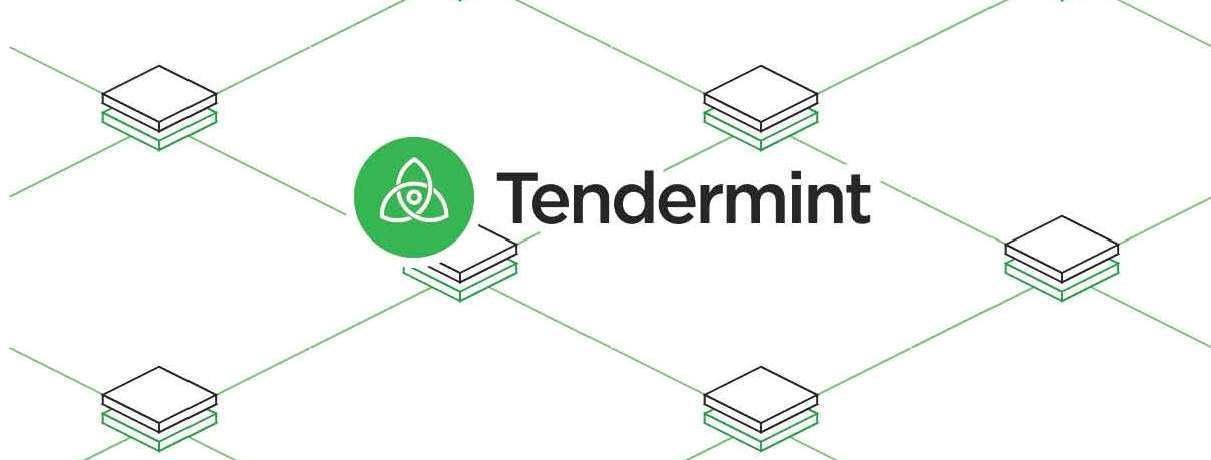
A low-latency network like Marlin allows systems like Tendermint to work with more efficiency. Tendermint’s Byzantine Consensus Algorithm relies on voting; the system has a timeout function that relies on decreasing the value of the Marlin Protocol 10 timeout parameter by a tenth and also decreases the number of rounds required before blocks get committed by decreasing round failures due to network losses.
Bitcoin/Ethereum
Bitcoin and Ethereum network use gossip to propagate blocks over public networks where the block is verified at each transmission, increasing the network propagation latency.
Applications
Decentralized exchanges
DEX’s rely on on-chain scaling for their off-chain solutions. Decentralized exchanges use a large order book to match buyers and sellers. These order books are usually off-chain as it is expensive to put completely on-chain. Decentralized exchanges have to balance the amount of information they put on-chain and off-chain. Putting a large amount of information off-chain reduces decentralization and security. Putting too much on-chain slows down the system considerably while increasing costs.
All of these solutions are only safe under the assumption that any fraud-proof can be quickly sent on-chain to maintain an anchor of trust. Their success is intrinsically tied to the ability of a blockchain to continually process transactions without congestion and are limited by the scalability bottleneck.
These are just a few of the examples where a solid Layer-0 can be implemented. All decentralized blockchains have issues with networking and block propagation and will benefit significantly from reduced latency and more significant overall throughput from peer to peer connections.
How does Marlin fit in with MIH Ventures?
Marlin fits in perfectly with MIH’s investment strategy. Marlin Protocol is a needed component in the future of the blockchain. The ability to be stable while consistently producing high-performance results cannot be understated. To produce better results in Decentralized Finance and another application layer dApplications/protocols, the foundation needs to be a solid one. There has been a severe lack of investment in both financial and time exhaustive research that requires stable long term investment and a knowledgable team.
Marlin Protocol 11 That is willing to work alongside Marlin Protocol to achieve the desired goal of creating a high-performance – stable layer-0 infrastructure.
The team
Marlin Protocol is being developed by a young team from India, with the CEO being a former Zilliqa core developer as CEO, aided by some developers that did stints at companies such as Microsoft, complemented by a CB(business)O with a strong entrepreneurial spirit.
Some notable advisors, such as the former CEO of BitTorrent, before it got acquired by TRON, and one of the co-founders of the City of Zion, the NEO development community.
Marlin entered Binance Labs’ incubation program and attracted investment from TechCrunch and CrunchBase founder Michael Arrington.
Siddhartha Dutta
Research and Development
Pratyaksh Sharma
Operations
Dean Pappas
Marketing
Prateesh Goyal
Research
Vaggos Chatziafratis
Research
Nilotpal Mukherjee
Business

